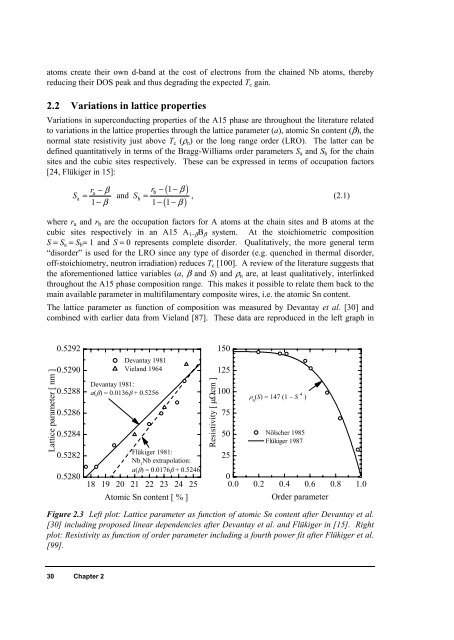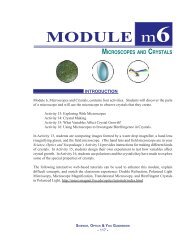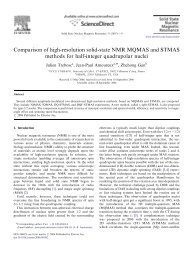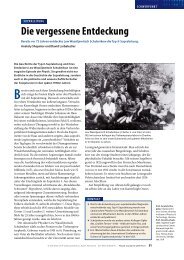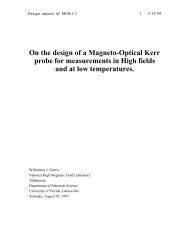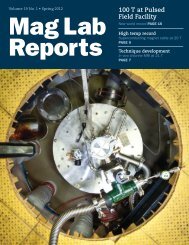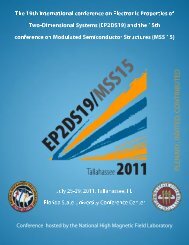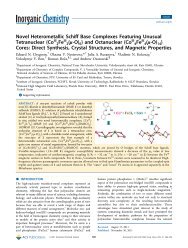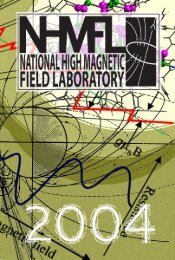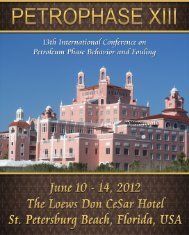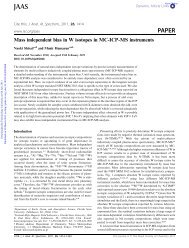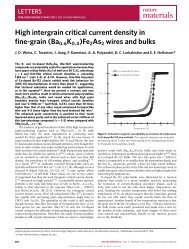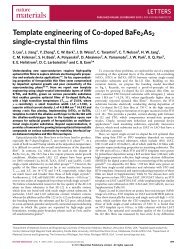Performance Boundaries in Nb 3 Sn Superconductors (PDF)
Performance Boundaries in Nb 3 Sn Superconductors (PDF)
Performance Boundaries in Nb 3 Sn Superconductors (PDF)
Create successful ePaper yourself
Turn your PDF publications into a flip-book with our unique Google optimized e-Paper software.
atoms create their own d-band at the cost of electrons from the cha<strong>in</strong>ed <strong>Nb</strong> atoms, thereby<br />
reduc<strong>in</strong>g their DOS peak and thus degrad<strong>in</strong>g the expected T c ga<strong>in</strong>.<br />
2.2 Variations <strong>in</strong> lattice properties<br />
Variations <strong>in</strong> superconduct<strong>in</strong>g properties of the A15 phase are throughout the literature related<br />
to variations <strong>in</strong> the lattice properties through the lattice parameter (a), atomic <strong>Sn</strong> content (β), the<br />
normal state resistivity just above T c (ρ n ) or the long range order (LRO). The latter can be<br />
def<strong>in</strong>ed quantitatively <strong>in</strong> terms of the Bragg-Williams order parameters S a and S b for the cha<strong>in</strong><br />
sites and the cubic sites respectively. These can be expressed <strong>in</strong> terms of occupation factors<br />
[24, Flükiger <strong>in</strong> 15]:<br />
S<br />
a<br />
a = Sb<br />
=<br />
( 1−β<br />
)<br />
( β)<br />
r − β rb<br />
−<br />
and<br />
1−β<br />
1− 1−<br />
, (2.1)<br />
where r a and r b are the occupation factors for A atoms at the cha<strong>in</strong> sites and B atoms at the<br />
cubic sites respectively <strong>in</strong> an A15 A 1−β B β system. At the stoichiometric composition<br />
S = S a = S b = 1 and S = 0 represents complete disorder. Qualitatively, the more general term<br />
“disorder” is used for the LRO s<strong>in</strong>ce any type of disorder (e.g. quenched <strong>in</strong> thermal disorder,<br />
off-stoichiometry, neutron irradiation) reduces T c [100]. A review of the literature suggests that<br />
the aforementioned lattice variables (a, β and S) and ρ n are, at least qualitatively, <strong>in</strong>terl<strong>in</strong>ked<br />
throughout the A15 phase composition range. This makes it possible to relate them back to the<br />
ma<strong>in</strong> available parameter <strong>in</strong> multifilamentary composite wires, i.e. the atomic <strong>Sn</strong> content.<br />
The lattice parameter as function of composition was measured by Devantay et al. [30] and<br />
comb<strong>in</strong>ed with earlier data from Vieland [87]. These data are reproduced <strong>in</strong> the left graph <strong>in</strong><br />
Figure 2.3 Left plot: Lattice parameter as function of atomic <strong>Sn</strong> content after Devantay et al.<br />
[30] <strong>in</strong>clud<strong>in</strong>g proposed l<strong>in</strong>ear dependencies after Devantay et al. and Flükiger <strong>in</strong> [15]. Right<br />
plot: Resistivity as function of order parameter <strong>in</strong>clud<strong>in</strong>g a fourth power fit after Flükiger et al.<br />
[99].<br />
30 Chapter 2


